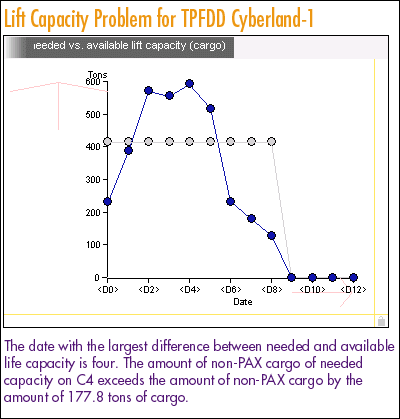RESEARCH
SAGE
Visage
SDM
Autobrief
VQE
Solar Plots
Applications
SAMPLES
PAPERS
PEOPLE
HOME

The real value of visualizations can best be demonstrated on applications that require intensive data exploration. To prove the vitality of our concepts we have developed a visual interface for DITOPS, a scheduling system developed at Carnegie Mellon University. This interface enables seamless transition between exploratory data analysis, scheduling, and communication. It provides
- custom visualizations for exploring schedules
- visual editors for modifying requirements and resources to the scheduling system
- an automated analysis and briefing tool (AutoBrief)
- the ability to design new visualizations with SAGE.
All components are integrated by Visage, the information-centric data exploration environment developed by MAYA Design in collaboration with our group.
A typical scenario in scheduling includes the following steps: preparing input data such as demands and resources, automated scheduling, summarizing the parameters and the problems of a schedule, exploring the problems, making adjustments to the input, and rescheduling. Each of these steps is supported by interface tools as shown in Figures 1, 2 and 3. Figure 1, below, contains a presentation by AutoBrief that indicates that there may not be enough aircraft to transport the cargo (the word "lift" is the logistics term for aircraft). The blue line shows the required lift capacity, and the gray line shows available lift capacity. Where the blue line rises above the gray line, the lift capacity is insufficient. This description provides the basic parameters of the shortfall and serves as a starting point for further exploration and analysis.

Figure 1
next page.

